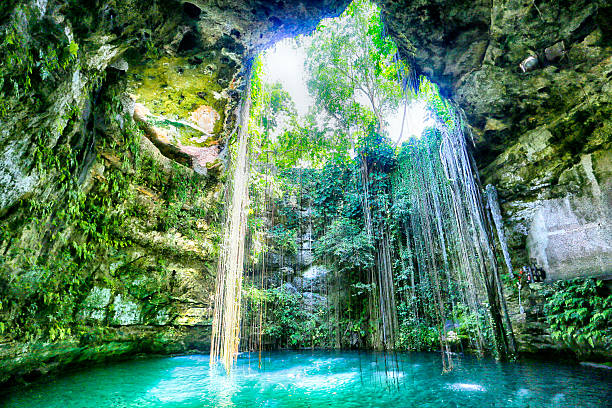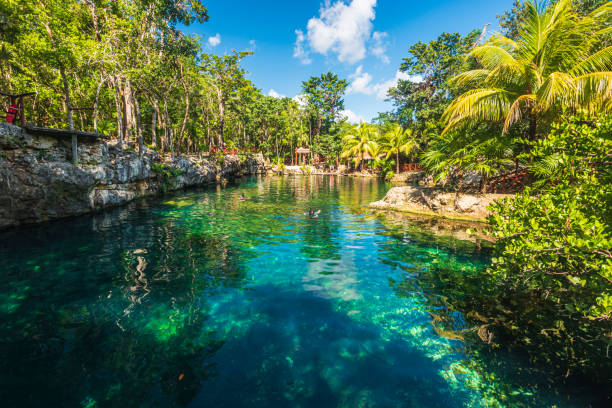Float in blue subterranean cenotes

A cenote is a natural pit or sinkhole formed by the collapse of limestone bedrock, exposing groundwater. The name is especially connected with Mexico's Yucatán Peninsula, where the Maya utilized cenotes for water supplies and, on occasion, sacrificial sacrifices. The phrase is derived from the lowland Yucatec Maya word tsonot, which refers to any place having accessible groundwater.
The Mayans saw cenotes as a way to communicate with the gods, therefore they erected communities around them. Natural limestone swimming holes are wonderful hidden pools to cool down in the bush for visitors nowadays. Cenotes are formed when porous limestone bedrock collapses, generating pools that are filtered to crystal purity. Underwater photographers, cavers, and snorkelers like the clear cenotes, as do swimmers looking for a tranquil swim protected by the magnificent forest canopy. In contrast to saltwater, the turquoise water in cenotes is pure and mineral rich. Floating in these quiet waters seems like stepping back in time. Look up at the vine columns and the beams of sunshine that pass through. Hummingbirds zigzag by, and it appears that little has changed since the Maya arrived.













